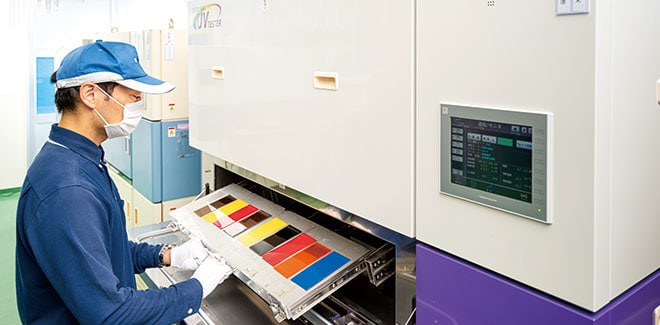The world of goods has changed a lot because of Environmental Simulation and the technologies used to test them, like climatic chambers. These technologies have raised the bar for product safety and made the things and materials we use every day better. We’ll go into more depth about ES and why it’s so crucial in the piece that follows.
Environmental Simulation Testing
Environmental simulation refers to any tests that imitate certain air conditions in order to observe and assess how materials and products respond.Testing may be used in practically every industry, from construction to electronics, medicines, food items, and the majority of everyday consumer goods.
According to the specific goal they seek, the environmental simulation tests are then separated into sub-categories, and we may mention:
- The tests for accelerated ageing
- Shelf-life simulation tests
- Tests of stability
- Tests that replicate usage scenarios
Climate chambers are the devices used in environmental simulation tests.
Learn about the latest Climatic Chambers for testing under regulated climate conditions.
Chambers for Environmental Simulation
The climatic chamber is a lab tool that enables environmental simulation by allowing a number of factors to be changed. Temperature and relative humidity are the fundamental variables that all climatic chambers can modify. These two variables are crucial in the majority of environmental simulation tests.
However, other factors besides just severe temperatures and high humidity levels have an impact on how long items and materials last.
In fact, diffusers that mimic different forms of precipitation and UV light sets that mimic the effects of sun exposure may be added to the climatic chambers.
The Environmental Simulation Testing Standards
A number of international organisations that carefully supervise each manufacturing sector control environmental simulation tests. The International Organization for Standardization and ASTM International are the two most significant of them. The IEC (International Electrotechnical Commission), which covers climatic tests in the IEC 60068 standard, should also be considered in the context of electronics.
These organisations set the standards for approval and the tests required to meet them for each industry. Since they are often modified, it’s critical to stay informed.
Uniform testing methods for environmental simulation
There are countless items whose service lives include exposure to some of the worst environmental conditions. Dynamic climate chambers have been the focus of industry and research for environmental simulation for many years. There are several standards and recommendations as a result of changing needs for measuring technologies and growing technical potential.
Compliance with these standards and recommendations is a substantial barrier for the measuring technology being utilised, in addition to the technical requirements. The reasons why you shouldn’t try to cut corners on the calibre of the technology you employ for environmental simulation are covered in the article that follows.
Knowledge of environmental simulation in depth
In environmental simulation, a variety of test techniques are used to determine how an item or biological system responds to the anticipated environmental circumstances. These circumstances are swiftly simulated.
To put it another way, the test conditions are chosen based on standards like “Good Laboratory Practice” so that they accurately reflect the stress that would really be applied over a longer time frame, which is frequently similar to a year. It should go without saying that the cost of measuring during this test period is another one that should be considered when purchasing new measurement technology.
Environmental simulation seeks to provide the most thorough analysis possible of the sometimes intricate web of causal linkages. Environmental simulation is therefore mostly used to identify causalities and represent them as models. Environmental simulations involve a high level of specialised expertise and place great demands on the measurement technologies utilised. Because no two experiments are precisely same, even though there are strict standards for virtually all use cases.
Environmental simulation applications
Environmental simulations encompass a wide range of test situations and parameters based on the given criteria. They are typically employed to investigate how a variety of environmental variables affect performance, function, long-term behaviour, service life, and the responses of a test item or live system to the environment.
Dynamic climate chambers have shown to be effective in environmental simulation, particularly in the field of electronics but also in other sectors including automotive, aerospace, and medical research. In our Case Studies on the dynamic climate chamber, we used real-world examples.
Environmental simulation: BINDER hardware and knowledge
In accordance with their specifications, dynamic climate chambers satisfy a wide variety of criteria important for replicating actual environmental conditions. These consist of:
- control of the temperature, humidity, and cycle programming
- Good dynamic climate chambers may be modified and adapted to meet the unique needs in order to establish extra parameters.
- Standardized testing methods
Environmental testing processes are always governed by certain regulations. The first section of the IEC 60068 standard specifies the broad criteria for classifying environmental simulations. The next sections examine the particular demands of the corresponding applications.
To determine the test object’s resistance to environmental variables, all of the aforementioned testing processes are used:
- above the anticipated service life, during installation, in transport, in storage, and under actual working circumstances.
- Comparatively, longer test cycles often result in higher dependability and higher-quality products.
- The circumstances for the standardised exam are heavily influenced by economic factors.
- Cost-saving measures include defining an appropriate testing window.
Also Check:
What are the Scheduling Softwares for Retail Managers in Retail Industry
Don’t be afraid to use outside expert information while developing standardised testing settings for environmental simulation.
BINDER has extensive expertise in this area and provides both the necessary measurement technology and in-depth understanding of its usage.
When it comes to testing materials, standardised test results are crucial. This is especially more true for use cases that are difficult, such long-term measurements or in dynamic environments. To learn about the factors you should take into account when purchasing a dynamic climate chamber, see our Buyer’s Guide.
